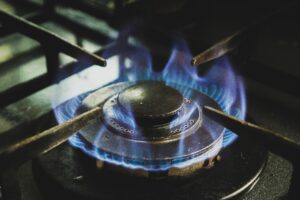Gone are the days of being stuck with an electric stove – now you have a choice between gas and electric. But when it comes to cooking, there’s no doubt that gas stoves offer superior performance. Whether you’re baking, making sauces, searing meat or grilling fish, using a gas stove gives you more control over temperature adjustments and delivers better results than its electric counterpart. In this post, we’ll discuss why gas stoves are the preferred choice for avid cooks everywhere – from their fast heating time and impressive efficiency to their consistent heat output across multiple burners. With comprehensive information about the advantages of each type of stove available here, you can be sure that by the end of this blog post you will be equipped to make an informed decision about which option is best suited for your needs!
Gas vs. electric stoves and their energy efficiency
When it comes to cooking, one of the most important decisions you’ll make is which type of stove to use. While gas and electric stoves have their similarities, they differ significantly in terms of energy efficiency. Electric stoves are often seen as the more energy-efficient option, as they convert all of the electricity they use into heat, whereas gas stoves lose some energy through the process of combustion. However, gas stoves are often preferred by professional chefs because they allow for more precise temperature control. When deciding between gas and electric stoves, it’s important to consider your cooking needs and habits, as well as the environmental impact of your energy usage.

Price difference between the two types of stoves
When it comes to purchasing a new stove, it’s important to understand the price differences between the two main types: gas and electric. While gas stoves may be more expensive upfront due to the cost of installation and the need for a gas line, in the long run they tend to be more cost-efficient with lower energy bills. Electric stoves, on the other hand, often come at a lower initial cost but can be more expensive to operate due to higher electricity usage. It’s important to weigh the pros and cons of each option and consider your own personal preferences and cooking habits before making a decision.
The environmental impact of both stove types
Stove types have come a long way from the traditional kerosene or wood-burning models. Today, there are two prevalent types of stoves: electric and gas stoves. While both types can cook a variety of dishes, their environmental impacts vastly differ. Electric stoves produce no direct emissions, making them cleaner and more eco-friendly. On the other hand, gas stoves use a fossil fuel source and emit carbon dioxide and other greenhouse gases when burning. It’s worth noting that the production and disposal of electric stoves still have some environmental impact, but in terms of daily use, electric stoves come out on top. Ultimately, the choice between gas and electric cooking appliances will depend on an individual’s preference, lifestyle, and priorities.
Why gas stoves are the superior choice for cooking
When it comes to cooking, there are many options to choose from. However, gas stoves are the clear winner. Why? Because they offer more temperature control and precision than electric stovetops. Gas stoves heat up much quicker, making it perfect for cooking time-sensitive dishes. Plus, they allow you to maintain a consistent temperature without any lag time when adjusting the heat. This precision is necessary when it comes to cooking more challenging meals, such as sauces or soufflés. Additionally, gas stoves are more cost-effective in the long run, especially compared to electric ones, which may require expensive repairs. Whether you’re a professional chef or a novice home cook, gas stoves are the best choice for anyone who wants to cook with precision, speed, and efficiency.
Key safety features of gas stoves
When it comes to cooking, gas stoves are a popular choice for many home chefs due to their quick heating capabilities and flexible heat control. Nonetheless, gas stoves can pose a potential hazard if they are not used properly or do not have proper safety features. Fortunately, there are many safety features available in modern-day gas stoves that help keep homes and families secure. Some of these safety features include automatic shut-off valves which turn off the gas supply when there is no flame detected, safety switches that prevent the stove from being accidentally turned on or off, and burner caps that prevent food from falling into the burners. By having these key features implemented in gas stoves, you can cook with peace of mind knowing that you and your family are safe.

Tips on how to best maintain a gas stove to get maximum use out of it
There’s nothing like cooking on a gas stove. So, if you have one in your home, you’ll want to make sure you keep it running smoothly for years to come. Caring for your gas stove doesn’t have to be a difficult task, but it does require a bit of attention. One of the most important steps you can take is to clean it regularly, both inside and out. Be sure to turn off the gas before cleaning! Another helpful tip is to keep it free of debris and crumbs. This will help prevent any unpleasant odors or smoke. Lastly, make sure to check your burners, fuel lines, and valves for any signs of wear and tear. By following these simple tips, you can keep your gas stove running smoothly and efficiently, making delicious meals for many years to come.
In summary, gas stoves are the superior choice for anyone looking to cook efficiently and environmentally friendly. While they may be pricier than electric stoves upfront, the money saved in energy costs over time easily makes up for it. Gas stoves are also far safer than electric ones, with strict safety regulations that have been put in place to protect consumers from potential fires or explosions. To get the most out of your new gas stove, regularly cleaning and maintaining its components is a must. Finally, being mindful of basic kitchen procedures such as properly turning off the burners after use and ensuring that all knobs and pilots buttons are turned off can prevent damage to your stove over time. With all of these steps taken you will be able to enjoy all the benefits that come with owning a gas stove for many years to come.
